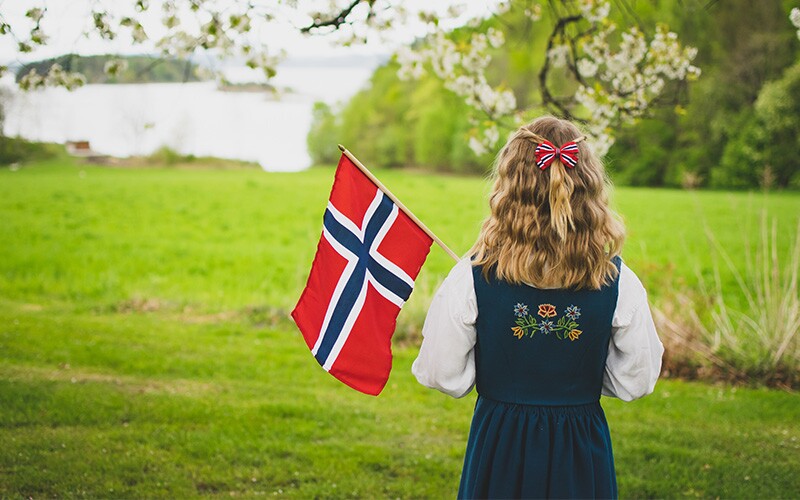Norway—the land of fjords, mountains, and reindeer—is one of the most beautiful countries in the world and boasts a charming culture. Whether you’re chasing the northern lights or your ancestral roots, you’ll discover countless things to do in Norway that will make your trip unforgettable.
If you’re lucky enough to make the trip, here is a guide to some of the rewarding experiences in Norway, including tips on turning your trip into an exploration of your cultural heritage.
Quick Links
- Check for Norwegian Ancestors
- Norwegian Cultural Experiences
- Sights to See in Norway
- Norwegian Heritage Sites and Museums
- Norwegian Genealogy Resources
Check for Norwegian Ancestors
Do you know if you have any Norwegian ancestors? One of the most personal things you can do in Norway is to understand the lives your family led. Before going to Norway, check if you have a connection to the country. All you have to do is create a create a free FamilySearch account.

Once you have an account, you can easily find your Norwegian ancestors by using the free Where Am I From? FamilySearch activity. This tool lets you see where past generations of your family came from.
Norwegian Cultural Experiences
One of the most enriching things to do in Norway is to explore local life. Norway has a rich cultural heritage, with native Sami culture, Viking history, and unique farm culture.
If your trip aligns with any of the following events, consider going to them! They may help you understand and celebrate the lives of your Norwegian ancestors. And whatever you do during your trip, be sure to sample some traditional Norwegian cuisine.
Sights to See in Norway
Take in Norway’s miraculous beauty, both natural and man-made. Countless activities in Norway involve the great outdoors, from hiking and kayaking to cycling and skiing, and even dog sledding and reindeer safaris. Experience the majestic landscapes, and, along the way, explore Norway’s unique architecture. Norwegian buildings reflect Norwegian life because styles evolved to withstand the harsh winters and ocean winds.
Norwegian Heritage Sites and Museums
Exploring heritage sites and museums can help you learn how your ancestors experienced life in Norway. Here are some of the museums and sites you could check out on your trip.

Norwegian Genealogy Resources
To form deeper connections to Norway on your trip, consider learning more about your ancestors while in the country. Here are a few ways to learn more about your family.
Find Your Ancestors Buried in Norway
While you’re in Norway, connect with your ancestors by visiting cemeteries (kirkegård or gravlund). Seeing your ancestors’ resting places can help you understand the reality of their lives and appreciate the way they contributed to your own life. FamilySearch has free tools you can use to locate burial sites across Norway.
Connect with a Local Genealogy Society
Consider contacting a Norwegian genealogy or history society before visiting Norway. These societies are often small and run by volunteers who are knowledgeable about the area. Through contact with a society, you may be able to learn where your ancestors lived, find living relatives to meet, or receive recommendations for things to do and foods to try.
Use these resources to find a genealogy or history society:
- Slekt og Data allows you to see a list of societies organized by region, county, and city. Please note, this website is in Norwegian. To find a society, click Slekt og Data der du bor, which stands for “Slekt og Data where you live,” and start searching.
- Historielagene allows you to find a society by county. Please note, this website is in Norwegian. To start looking for a society, on the website, click Finn Lag, which means “Find group,” and select a county to start looking for a society.
- Try searching on your browser for the name of the place you are visiting, and add “historielag” (history society) or “slektshistorielag” (family history society) to your search. Once you have the name of the society, look for a website to determine how to contact the society.
Visit the Archives
You can also visit different archives in Norway to see what else you can find out about your family through historical documents that may not be online.
Meet a Relative
Meeting your living relatives can be one of the most rewarding experiences you can have while traveling in an ancestral homeland. Relatives may have pictures and stories you have never seen or heard. Here are a few ways you can try to find a relative.
- Search for your ancestors on public family tree websites such as FamilySearch, Ancestry, and MyHeritage. Look for the creator or contributors to the family tree with your ancestor in it, and send them a message.
- Connect with living relatives by taking a DNA test.
- Between February and March of each year, use FamilySearch’s Relatives at RootsTech tool to find living family connections.
- If you make contact with a local society, ask them if they can help you find living relatives.

Safe Travels!
Whatever you do in Norway, take the time to discover more about your cultural heritage during your travels, and by doing so, uncover more about your family story. How do you plan on honoring your Norwegian heritage and ancestors on your trip to Norway?















